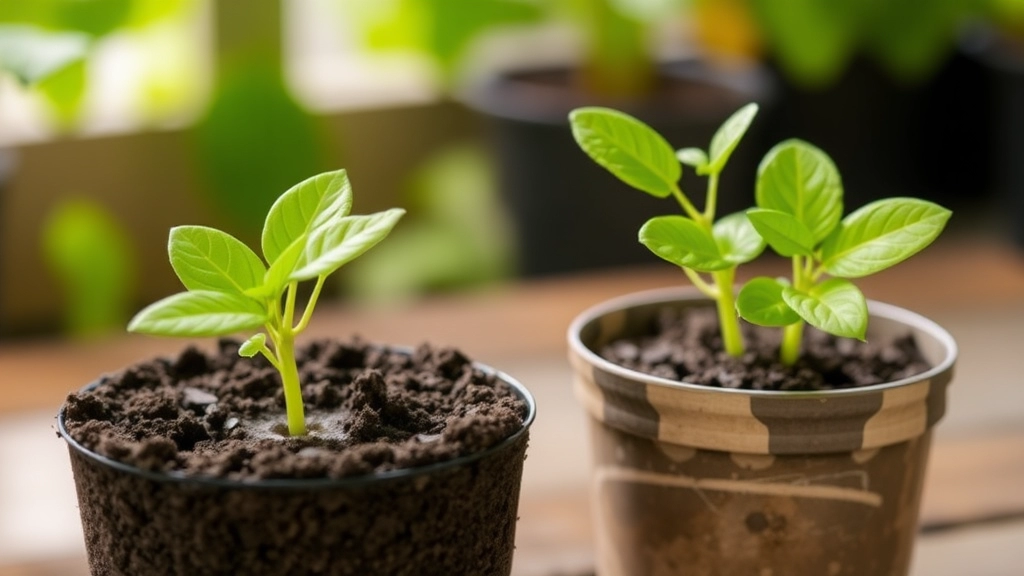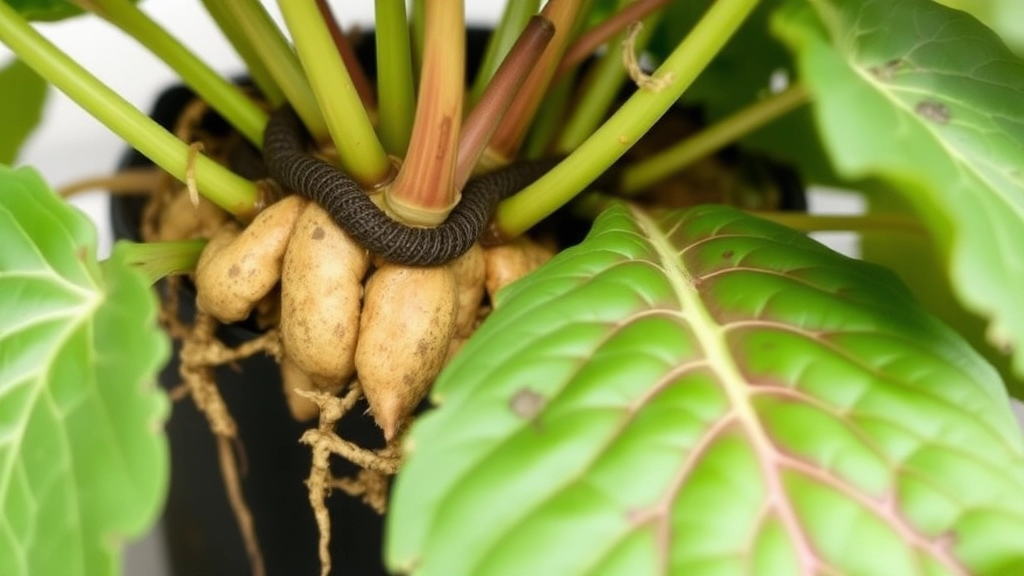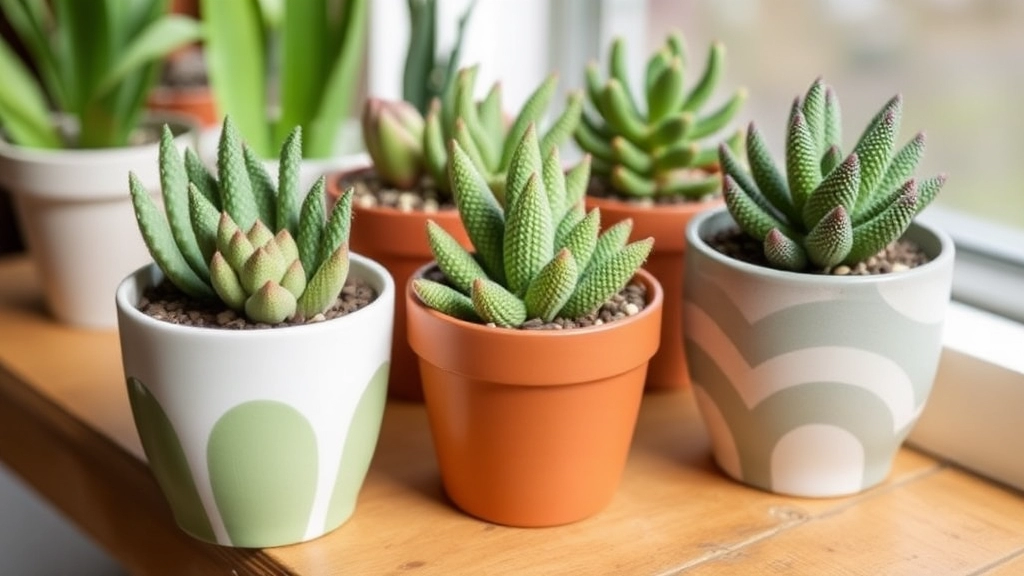Kalanchoe Mother of Thousands Flower
Overview
The Kalanchoe Mother of Thousands Flower, also known as Kalanchoe daigremontiana, is a fascinating succulent that captivates plant enthusiasts with its unique propagation method and minimal care requirements. If you’re looking to add this intriguing plant to your collection, understanding its care needs is essential.
Care Needs
From proper watering techniques to ideal sunlight exposure, ensuring your Mother of Thousands thrives is simpler than you might think.
How to Care for Mother of Thousands: Watering and Sunlight Needs
When it comes to caring for your Mother of Thousands (Kalanchoe daigremontiana), understanding its watering and sunlight requirements is crucial. Many plant enthusiasts worry about how much water to provide or how much sun is too much. Let’s break this down.
Soil and Potting Requirements for Healthy Growth

So, you’ve got your Mother of Thousands, and now you’re wondering about the best soil and potting options?
Let’s dive in!
Choosing the Right Soil
The right soil is crucial for your Kalanchoe daigremontiana to thrive. Here’s what you need:
- Well-draining soil: This is non-negotiable. A cactus or succulent mix works wonders.
- pH level: Aim for a slightly acidic to neutral pH, around 6.0 to 7.0.
- Additives: Consider mixing in perlite or coarse sand to boost drainage.
Potting Essentials
Now, let’s talk pots. The right pot can make all the difference:
- Drainage holes: Always pick a pot with drainage holes. This prevents water from sitting at the bottom, which can lead to root rot.
- Size: Choose a pot that’s just a bit larger than the root ball. Too big, and the soil can retain too much moisture.
- Material: Terracotta pots are great because they’re porous, allowing moisture to escape.
Repotting Tips
If your Mother of Thousands is outgrowing its pot, here’s how to repot:
- Timing: Spring is the best time for repotting.
- Gently remove: Carefully take the plant out of its old pot, keeping the root system intact.
- Fresh soil: Place it in the new pot with fresh soil, ensuring the roots are covered but not buried too deep.
Propagating the Mother of Thousands Plant: A Guide to Plantlets
Have you ever wondered how to propagate your Mother of Thousands plant?
This unique succulent, known for its ability to produce numerous plantlets, makes propagation both easy and rewarding.
Understanding Plantlets
The Mother of Thousands, or Kalanchoe daigremontiana, produces small offsets or âplantletsâ along the edges of its leaves. These tiny plants can grow roots and develop into independent specimens.
Steps for Successful Propagation
- Choose Healthy Leaves:
- Select mature leaves that show no signs of damage or disease.
- Remove Plantlets:
- Gently detach the plantlets from the leaf.
- Use clean scissors or your fingers to avoid damaging them.
- Let Them Callous:
- Place the plantlets on a dry surface for a couple of days.
- This helps form a protective layer, reducing the risk of rot.
- Prepare the Soil:
- Use a well-draining soil mix, ideally a cactus or succulent blend.
- Consider adding perlite for extra drainage.
- Plant the Offsets:
- Insert the plantlets into the soil, ensuring they are upright.
- Water lightly to settle the soil around the roots.
- Create the Right Environment:
- Place the pots in a bright, indirect light location.
- Maintain a warm temperature to encourage growth.
- Water Sparingly:
- Allow the soil to dry out between waterings.
- Overwatering can lead to root rot.
Monitoring Growth
Keep an eye on your new plantlets. You can expect to see roots developing within a few weeks, and soon, they’ll be ready to thrive on their own.
For more detailed information on caring for similar plants, check out our Complete Guide to Kalanchoe Mother of Thousands Care & Propagation and our Mother of Millions Care Guide.
Common Issues and Solutions: Overwatering, Root Rot, and Leaf Problems

As you nurture your Mother of Thousands, you may encounter some common challenges that can hinder its growth and vibrancy. Understanding these issues is crucial for maintaining a healthy plant.
Overwatering
One of the most frequent problems is overwatering. This occurs when the soil retains too much moisture, leading to various complications.
Signs of Overwatering:
- Yellowing leaves
- Wilting despite moist soil
- A musty smell from the soil
Solutions:
- Allow the top inch of soil to dry out before watering again.
- Use pots with drainage holes to prevent water accumulation.
- Consider using a moisture meter to gauge soil moisture accurately.
Root Rot
Root rot is a severe condition often caused by overwatering. It can quickly lead to the demise of your plant if not addressed promptly.
Signs of Root Rot:
- Black, mushy roots
- Stunted growth
- Leaves dropping off
Solutions:
- Remove the plant from its pot and inspect the roots. Trim away any black, rotting sections.
- Repot in fresh, dry soil, ensuring the new pot has good drainage.
- Reduce watering frequency to allow the plant to recover.
Leaf Problems
Leaf issues can manifest in various ways, from discoloration to spots. Identifying the cause is key to resolving these problems.
Common Leaf Problems:
- Brown tips: Often a sign of low humidity or underwatering.
- Spots: Could indicate pests or fungal infections.
Solutions:
- For brown tips, increase humidity around the plant or adjust your watering schedule.
- Inspect leaves regularly for pests. If found, treat with insecticidal soap or neem oil.
- For fungal spots, improve air circulation and avoid overhead watering.
By addressing these common issues proactively, you can ensure your Mother of Thousands thrives.
Flowering of Kalanchoe daigremontiana: What to Expect
When caring for your Mother of Thousands, you might wonder about its flowering habits.
Will it bloom? How often? What do the flowers look like?
Kalanchoe daigremontiana does produce flowers, but it’s not something you can expect regularly.
Here’s what you should know:
- Flowering Season: Typically, these plants flower in late winter to early spring.
- Flower Appearance: The flowers are small, tubular, and usually pink or reddish in colour, forming clusters that can be quite striking.
- Light Requirements: To encourage blooming, ensure your plant receives plenty of bright, indirect sunlight.
- Temperature Preferences: A warmer environment, ideally between 20-25°C (68-77°F), can stimulate flowering.
- Watering Needs: During the blooming period, maintain a consistent watering schedule, but avoid overwatering to prevent root rot.
While flowering can be a delightful surprise, it’s essential to remember that Kalanchoe daigremontiana is primarily known for its unique plantlets rather than its blooms. If you’re keen on enjoying a vibrant display, consider providing optimal conditions. Additionally, you might find it helpful to explore this complete guide to Kalanchoe Mother of Thousands care and propagation for more tips. For those interested in other varieties, the top Kalanchoe succulent varieties and care tips can offer great insights.
Managing Invasive Growth: Tips for Indoor and Outdoor Containment

So, you’ve got a Mother of Thousands, and now you’re wondering how to keep it from taking over your space, right? This plant can be a bit of a show-off, spreading its little plantlets everywhere. But don’t worry, I’ve got some straightforward tips to help you manage its growth, whether indoors or outdoors.
Indoor Containment
- Choose the Right Pot: Opt for a pot with drainage holes. This helps control moisture and keeps the plant in check.
- Regular Pruning: Snip off any wayward plantlets. This not only keeps it tidy but also encourages bushier growth.
- Limit Light Exposure: If your plant is getting too much light, it may grow faster. Try placing it in a slightly shadier spot.
- Use Barriers: Consider using a plant tray or a decorative pot that’s deeper than usual. This can help contain any escaping roots.
Outdoor Containment
- Create Boundaries: Plant your Mother of Thousands in a designated area. Raised beds or garden borders can help keep it from spreading too far.
- Mulch and Ground Cover: Adding mulch around the plant can suppress unwanted growth and keep those little plantlets from wandering off.
- Regular Checks: Make it a habit to check your garden. If you see any new plantlets popping up outside the designated area, pull them out right away.
- Consider Companion Plants: Surround your Mother of Thousands with plants that can compete for space and nutrients. This can help keep its growth in check.
Toxicity Concerns: Keeping Pets and Children Safe
As we explore the care of the Mother of Thousands plant, it’s essential to address a significant concern: its toxicity. This is particularly important for families with pets and young children.
Is Mother of Thousands Dangerous?
Yes, Kalanchoe daigremontiana contains compounds that can be harmful if ingested. Here’s what you need to know:
- Toxicity Level: The plant is classified as mildly toxic.
- Symptoms of Ingestion: If consumed, it can cause gastrointestinal distress, including vomiting and diarrhoea.
- Pets at Risk: Cats and dogs are particularly susceptible. Symptoms in pets may include lethargy, loss of appetite, and in severe cases, heart issues.
Precautionary Measures
To ensure a safe environment for your loved ones, consider the following tips:
- Placement: Keep the plant out of reach of children and pets. A high shelf or a room that’s off-limits can be effective.
- Education: Teach children about the importance of not touching or eating plants without adult supervision.
- Alternatives: If you’re concerned about toxicity, consider non-toxic plant alternatives that are safe for homes with pets and children.
For more detailed information on protecting your pets, check out our guide on Kalanchoe tomentosa toxicity. If you’re looking for safer plant options, you might find our article on Kalanchoe tomentosa ‘Dorothy Brown’ care helpful.
Best Pots and Containers for Mother of Thousands

So, you’ve got your Mother of Thousands (Kalanchoe daigremontiana) and you’re wondering what kind of pot or container to use.
Choosing the right pot is crucial for keeping this unique plant thriving.
Key Considerations for Pots
- Drainage: Look for pots with drainage holes. This helps prevent water from sitting at the bottom, which can lead to root rot.
- Material: Terracotta pots are a popular choice. They allow for breathability, which is great for succulents. Plastic pots are lighter and retain moisture longer, but make sure they have drainage.
- Size: A pot that’s too big can hold excess moisture, while one that’s too small can restrict growth. Aim for a pot that’s about 1-2 inches larger in diameter than the plant’s current pot.
- Weight: Consider where you’ll place your plant. If it’s on a shelf, a lighter pot might be better. If it’s on the floor, heavier materials like ceramic can add stability.
Fun Tip:
You can even get creative with your pots! Upcycled containers, like old teacups or mason jars, can make for quirky plant homes. Just ensure they have drainage.
Container Options
- Terracotta Pots: Great for air circulation and moisture control.
- Ceramic Pots: Stylish and heavy, but ensure they have drainage holes.
- Plastic Pots: Lightweight and versatile, but check for drainage.
Seasonal Care Tips: Temperature and Fertilization
As we delve deeper into the care of the Mother of Thousands plant, understanding its seasonal needs is crucial for optimal growth and health.
Temperature Requirements
Mother of Thousands thrives in warm conditions, but it’s essential to monitor the temperature throughout the year:
- Spring and Summer:
- Ideal temperature range is between 20°C to 30°C (68°F to 86°F).
- Ensure your plant gets plenty of sunlight during these months.
- Autumn and Winter:
- The plant can tolerate cooler temperatures, ideally between 10°C to 15°C (50°F to 59°F).
- Avoid exposing it to frost, as this can damage the leaves.
Fertilization Guidelines
Feeding your Mother of Thousands properly can make a significant difference in its growth:
FAQs about Kalanchoe Mother Of Thousands Flower
What type of soil is best for Kalanchoe Mother of Thousands?
The ideal soil for Kalanchoe Mother of Thousands is well-draining soil. A cactus or succulent mix works wonders. Aim for a slightly acidic to neutral pH level, around 6.0 to 7.0. Adding perlite or coarse sand can also boost drainage.
What kind of pot should I use for my Mother of Thousands?
Choose a pot with drainage holes to prevent water accumulation. Terracotta pots are great for their porous nature, allowing moisture to escape. The pot size should be just a bit larger than the root ball to avoid excess moisture retention.
How often should I repot my Mother of Thousands?
Spring is the best time to repot your Mother of Thousands. Carefully remove the plant from its old pot, keeping the root system intact, and place it in a new pot with fresh soil. Ensure the roots are covered but not buried too deep.
What are the signs of overwatering, and how can I fix it?
Signs of overwatering include yellowing leaves, wilting despite moist soil, and a musty smell from the soil. To fix this, allow the top inch of soil to dry out before watering again, use pots with drainage holes, and consider using a moisture meter to gauge soil moisture accurately.
How can I prevent and treat root rot in my plant?
Root rot is often caused by overwatering. Signs include black, mushy roots, stunted growth, and leaves dropping off. To treat root rot, remove the plant from its pot, trim away any black, rotting sections, and repot in fresh, dry soil with good drainage. Reduce watering frequency to allow the plant to recover.
What should I do if my plant has leaf problems?
Common leaf problems include brown tips and spots. Brown tips are often a sign of low humidity or underwatering, while spots could indicate pests or fungal infections. Increase humidity or adjust your watering schedule for brown tips, inspect and treat for pests with insecticidal soap or neem oil, and improve air circulation to prevent fungal spots.
How can I manage the invasive growth of my Mother of Thousands indoors?
To manage indoor growth, choose a pot with drainage holes, regularly prune wayward plantlets, limit light exposure to control growth rate, and use barriers like a plant tray or deeper decorative pot to contain escaping roots.
What are some tips for containing Mother of Thousands outdoors?
For outdoor containment, plant in a designated area with boundaries like raised beds or garden borders. Use mulch around the plant to suppress unwanted growth, regularly check for new plantlets outside the designated area, and consider companion plants to compete for space and nutrients.
What are the best pots and containers for Mother of Thousands?
The best pots have drainage holes. Terracotta pots are excellent for air circulation and moisture control. Ceramic pots are stylish and heavy but ensure they have drainage holes. Plastic pots are lightweight and versatile but also need drainage. The pot size should be about 1-2 inches larger in diameter than the plant’s current pot.
Can I use creative containers for my plant?
Yes, you can get creative with your pots! Upcycled containers like old teacups or mason jars can make quirky plant homes, but ensure they have drainage to prevent water accumulation.
References
-
Growing and Caring for Mother of Thousands (The Spruce)
-
Mother of Thousands Plant Care (Gardening Know How)
-
Mother of Thousands: Plant Care & Growing Guide (The Old Farmer’s Almanac)
